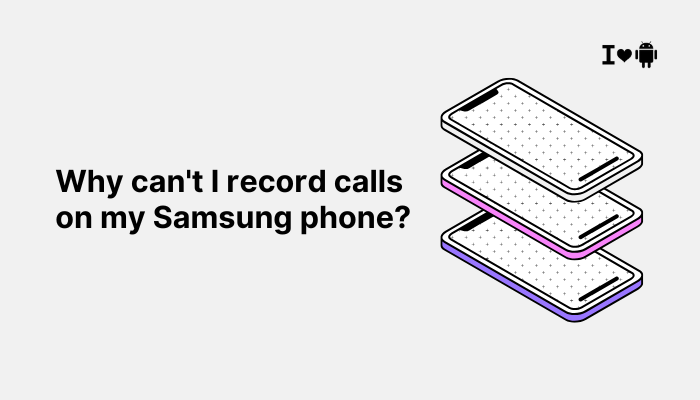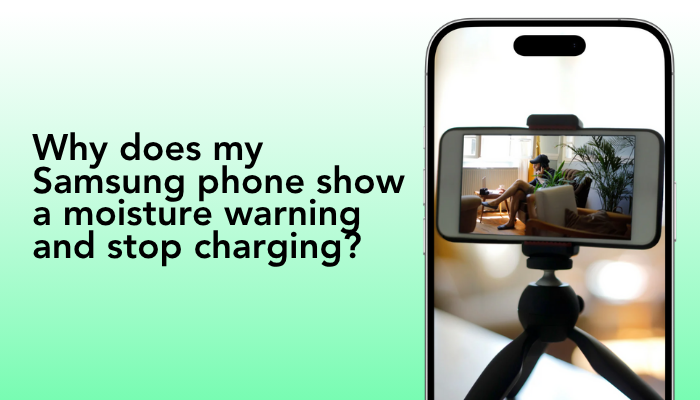Introduction
Call recording can be indispensable for business calls, interviews, and keeping accurate records of important conversations. Yet many Samsung Galaxy users discover that their phone’s built-in dialer offers no Record button or that third-party recorder apps fail to capture audio.
This isn’t a random bug—it reflects a mix of legal requirements, Android platform changes, carrier and firmware restrictions, and Samsung’s own design choices.

Legal and Regional Restrictions
One-Party vs. Two-Party Consent Laws
- One-Party Consent: Only one participant (you) must consent for recording to be legal. This applies in many U.S. states (e.g., New York, Texas).
- Two-Party (All-Party) Consent: All participants must agree. Countries like Germany, Canada (some provinces), and India enforce two-party rules or unclear consent requirements.
Because Samsung ships globally, it often disables or hides call recording in firmware for regions where laws forbid or complicate recording. This reduces corporate liability and prevents inadvertent legal breaches.
Default Firmware Based on Region
- Samsung’s regional firmware builds (e.g., Europe, India, Middle East) may include recording features, while U.S. carrier-locked firmware usually omits them.
- Even within a single country, different carrier variants (Verizon vs. unlocked) may behave differently based on negotiated policies with Samsung.
Android Platform and API-Level Changes
Android 9 “Pie” Restrictions
- With Android 9, Google tightened the official call recording APIs, effectively preventing apps from accessing the in-call audio stream unless they use unofficial workarounds or system-level privileges.
- Stock Phone apps on Android 9+ can no longer record calls via the documented API, forcing many third-party apps to rely on the accessibility service or microphone input, resulting in degraded or missing audio.
Android 10+ Security Enhancements
- Further platform hardening on Android 10 and above restricts background apps’ ability to record calls, unless they are set as the default dialer and explicitly request the ROLE_CALL_SCREENING or other privileged permissions.
- Samsung’s One UI builds integrate Google’s security policies, meaning that unless the Phone app itself supports recording, no third-party app can reliably intercept call audio.
Carrier-Imposed Limitations
Carrier Firmware Agreements
- Major carriers (especially in the U.S.) negotiate with OEMs to disable call recording on devices they subsidize, citing regulatory uncertainty and corporate policies.
- Even unlocked models sometimes carry a carrier-flashed firmware that lacks recording features, requiring a full firmware reflash to restore them.
SIM-Based Restrictions
- Certain carriers may flag call recording attempts and block associated permissions at the SIM level or through network-side controls.
- If your SIM is from a provider that disallows recording (for instance, some enterprise or MVNO lines), enabling recording may break your service agreement.
Privacy and Security Policies
Samsung’s Privacy Stance
- To safeguard user privacy and minimize misuse, Samsung may opt to disable call recording in regions with ambiguous regulations or where misuse could trigger legal exposure.
- This “better safe than sorry” approach means fewer support requests about unauthorized recordings but also fewer features for those who need them.
Android Privacy Sandbox and Permissions
- Android’s move toward a “Privacy Sandbox” further isolates sensitive streams (phone, microphone) from ordinary apps.
- Permissions like RECORD_AUDIO alone no longer guarantee access to in-call audio; apps must be the system dialer or have elevated privileges.
Samsung Phone App Design Choices
Feature Flag Behind a Toggle
- On models sold in markets where recording is legal, Samsung includes a hidden feature flag in the Phone app, enabled only in certain builds.
- Without a regional or carrier-approved toggle in Phone app → Settings → Call recording, the option remains invisible even if underlying support exists.
Risk of Inconsistent Experience
- Samsung avoids partial rollouts that could confuse customers. Instead of letting some devices record while others cannot, Samsung often omits recording entirely from the UI on broad swathes of devices.
Technical and Hardware Challenges
In-Call Audio Routing
- Modern smartphones use multiple audio paths for calls (earpiece, speaker, Bluetooth), making reliable capture via software more complex.
- OEMs must sign non-disclosure agreements with chipset vendors (e.g., Qualcomm) to expose internal audio channels. Without this, only the microphone path is available, yielding poor quality or one-sided recordings.
VoLTE and Wi-Fi Calling Impact
- Calls over LTE or Wi-Fi (VoLTE, VoWiFi) often bypass traditional voice codecs, complicating software-based recording. OEMs and carriers may not provide hooks to intercept these new streams.
Android Security Updates and Patched Workarounds
Closed Patches to Popular Hacks
- In the past, call recording apps exploited loopholes in Android’s audio stack. Security patches in newer One UI and Android updates have closed many of these loopholes, breaking legacy recording apps.
- Apps like Boldbeast and ACR may no longer work on the latest firmware without root or special permissions.
Root and Custom ROM Trade-Offs
- Rooting your Samsung device or installing a custom ROM (LineageOS, etc.) may re-expose recording APIs, but at significant security, stability, and warranty costs.
- Knox and Samsung Pay are disabled once root is detected, and system updates may fail.
Workarounds and Alternatives
Use a Region-Locked Firmware (If Legal)
- Some users install an Indian or Asian unlocked firmware build on their devices, gaining the built-in call recorder. This requires downloading the correct Odin package and flashing via Download Mode.
Warning: Flashing incompatible firmware can brick your phone and void warranty.
Google Phone App in Supported Regions
- In markets like India and parts of Europe, the Google Phone app supports call recording when set as the default dialer.
- Install Google Phone from Play Store.
- Settings → Apps → Default apps → Phone app → Phone by Google.
- Make a call and tap Record.
Use Third-Party Hardware Adapters
- Bluetooth or wired adapters can record the microphone output during calls externally, though audio quality and convenience suffer.
- These devices capture audio in real time, bypassing OS restrictions—useful only when no software solution exists.
Recording via VoIP Clients
- Use apps like Skype, Google Meet, or Zoom for calls you need recorded. These have built-in recording features and work over data/Wi-Fi.
- Although not true “cellular” call recording, they provide high-quality audio capture with participant consent.
Enterprise Call Recording Solutions
- In corporate environments, deploy PSTN-integrated call-recording servers or VoIP PBX systems that log calls on the network side.
- This avoids handset restrictions entirely, but requires infrastructure and compliance planning.
Best Practices and Legal Compliance
- Always Inform Participants: Even in one-party consent regions, ethical practice is to announce “This call is being recorded.”
- Secure Your Recordings: Store files in encrypted folders or use apps with PIN/fingerprint locks.
- Backup Responsibly: Sync recordings to cloud services with end-to-end encryption.
- Delete Unneeded Recordings: Respect privacy and reduce liability by removing outdated files.
- Keep Software Updated: Occasionally, Samsung or carriers re-enable recording in later firmware—install updates and re-check settings.
Conclusion
The inability to record calls on many Samsung Galaxy phones stems from a complex interplay of legal constraints, Android platform changes, carrier agreements, and Samsung’s design decisions. While these measures protect privacy and limit corporate risk, they can frustrate legitimate use cases.
By understanding the root causes—regional firmware, tightened APIs, VoLTE challenges—you can explore safe workarounds such as Google Phone in supported markets, firmware flashes where legal, or external VoIP solutions.
Always remain legally compliant and respectful of privacy when recording conversations, and back up sensitive calls securely. With this knowledge, you’ll be better equipped to decide whether to pursue advanced modifications or adopt alternative recording strategies.



